1900s
Pneumonia Blouse
In the early twentieth century, women began wearing low-necked, gauzy blouses. Conservative critics branded them "pneumonia blouses" — warning that they would cause the women wearing them to catch pneumonia.More info: Jonathan Walford's blog

Example of a pneumonia blouse
Source: Holly Vogue Vintage
I often see young women out and about, dressed completely inappropriately for the cold weather, suffering for the sake of fashion. So the spirit of the pneumonia blouse seems to be alive and well, if not the specific style.

Victorian to Vamp: Women's Clothing 1900-1929, by Paula Jean Darnell
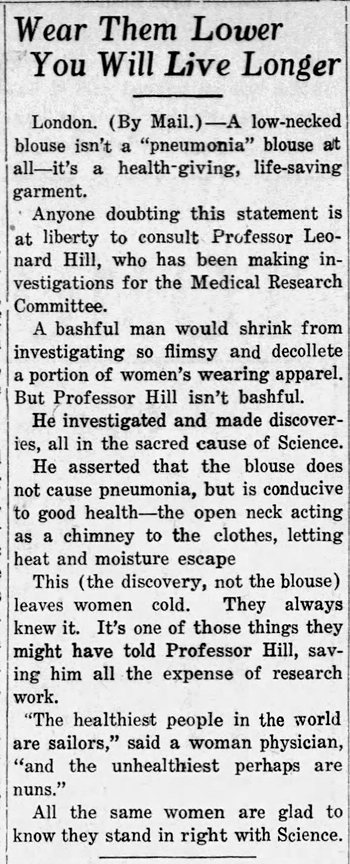
University Daily Kansan - Mar 18, 1920
Posted By: Alex - Sat Feb 05, 2022 -
Comments (3)
Category: Fashion, Health, 1900s
First Pig To Fly
In 1909, a pig (subsequently named Icarus) became the first pig to fly in an airplane.However, as far as I know a pig has never gone beyond the atmosphere into space. I know this because I once briefly had the idea of writing a book titled Pigs in Space about the history of animals in space. But I abandoned the idea when I couldn't find any record of pigs in space. The closest I found was when, in 2005, the Chinese sent some pig sperm into space. I didn't think Pig Sperm in Space would work as a title.
More info about the flying pig: londonist.com


image source: waymarking.com

Saskatoon Star-Phoenix - Nov 25, 1909
Posted By: Alex - Sat Jan 29, 2022 -
Comments (5)
Category: Animals, Air Travel and Airlines, 1900s
The Ordinances of Lancaster, South Carolina, 1903
We've all seen those features that dig up "Crazy Laws Still on the Books." But how did such ordinances ever first get established? By big and small towns trying to regulate every human behavior they could think of.Here are a few choice samples from a randomly chosen place!
Source: The Lancaster News (Lancaster, South Carolina) 16 May 1903
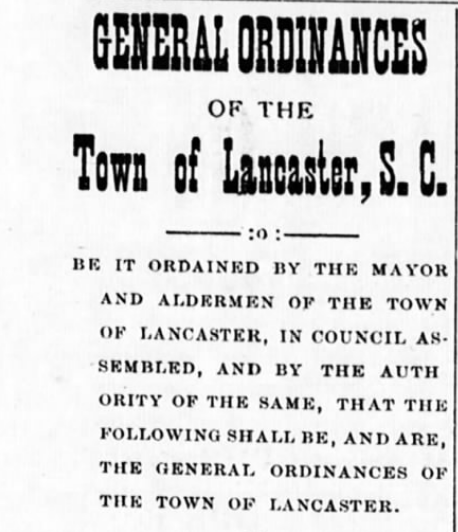
No public marble playing
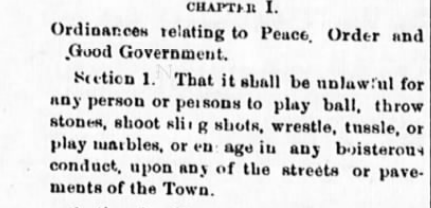
No annoying churchgoers
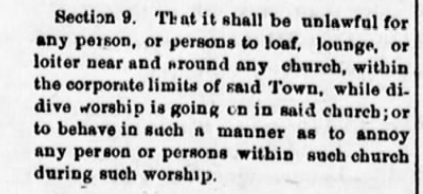
No hookers
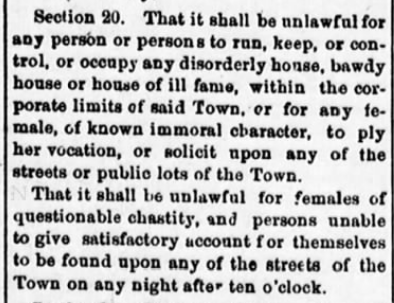
No tramps, cardsharps or fortune tellers
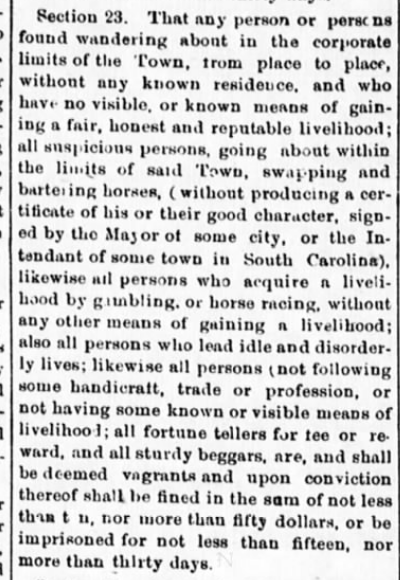
No dirks or slingshots
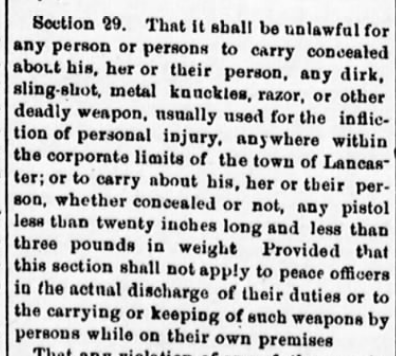
No outward-opening gates
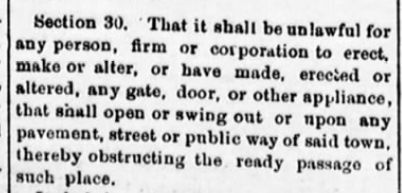
Must ring bicycle bell
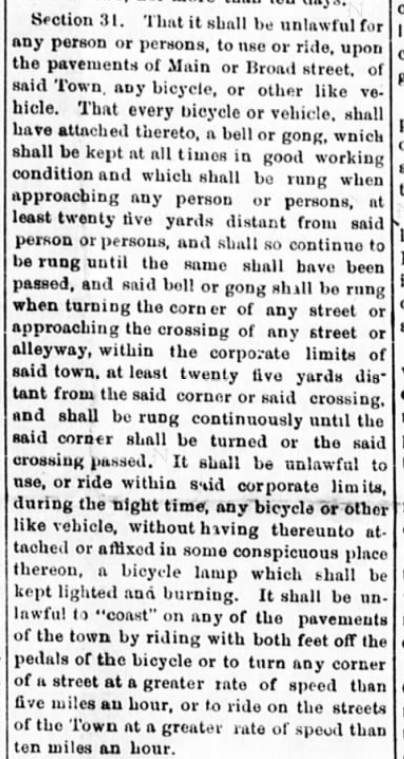
No piles of public poop
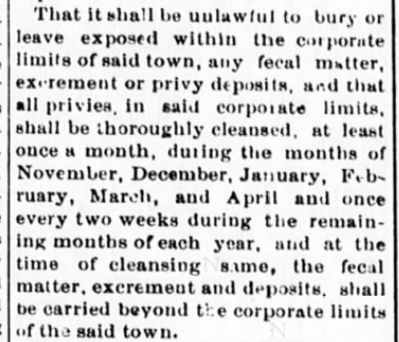
No bad oysters

To their credit, the officials imposed lots of rules on the cops as well. These are just a few.
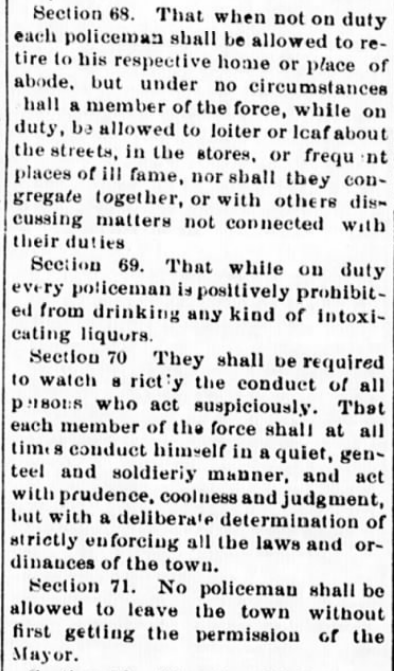
Posted By: Paul - Wed Jan 19, 2022 -
Comments (2)
Category: Government, Police and Other Law Enforcement, Regionalism, 1900s
Sex on an Animal Hide Rug
The subtext in the ad is obvious. Fur rugs, fake or real, are for making love on. It's the staple of a thousand PLAYBOY cartoons.But where did the trope originate? Most likely with writer Elinor Glyn. Her novel THREE WEEKS (read it here) featured such a scene that became so notorious, it inspired some doggerel.
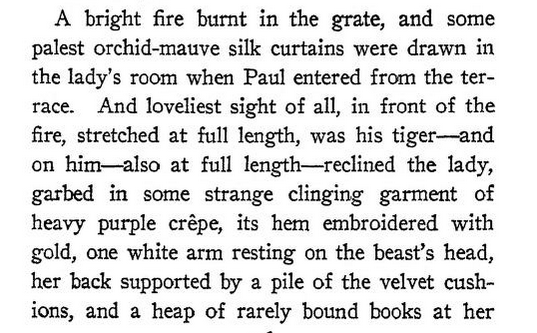
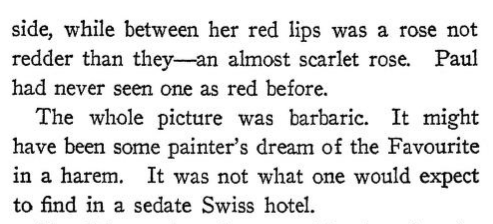
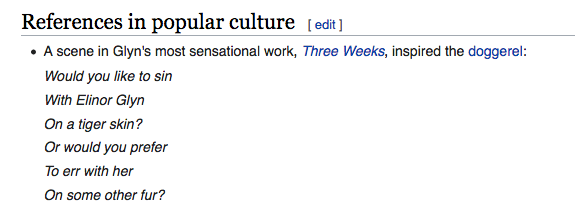
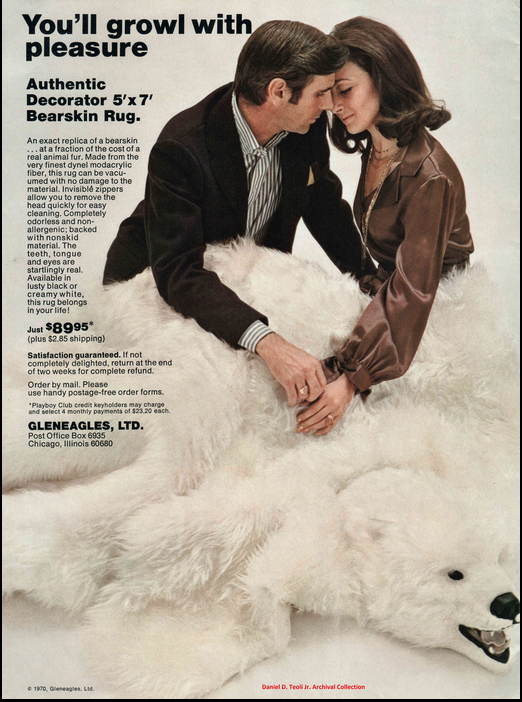
Posted By: Paul - Sun Jan 02, 2022 -
Comments (0)
Category: Animals, Domestic, Books, 1900s, 1970s, Sex
A Tough Dance
Posted By: Paul - Sat Oct 16, 2021 -
Comments (3)
Category: Movies, 1900s, Dance
And the Villain Still Pursued Her; Or, The Writer’s Dream (1906)
The movie in questions starts at minute 32:00.
Essay about it here.
And the Villain Still Pursued Her; Or, The Writer’s Dream joins that rarified company of “What in the name of heaven did I just watch?” films.
Posted By: Paul - Sat Oct 09, 2021 -
Comments (2)
Category: Dreams and Nightmares, Movies, Surrealism, Writers, 1900s
Crook, the Unkissed
Algie R. Crook (or "Alja" Crook, as his name was sometimes spelled) was a professor of mineralogy at Chicago's Northwestern University. His great claim to fame, however, had nothing to do with science. Instead, it was that in April, 1901 he allegedly told his undergraduate class that he had never kissed a woman. More specifically, he reportedly said, "I have never uttered a profane word, never have smoked or chewed tobacco, drank intoxicants, nor hugged or kissed a woman."Given that he was thirty-seven years old at the time, this was considered a remarkable admission. So remarkable that when word of it leaked to the press it became international news.

Great Falls Tribune - May 15, 1901
The media started referring to him as "Crook, The Unkissed." Acquaintances of Crook (or people who claimed to be his acquaintances) readily confirmed the tale, attributing his lack of kisses to his embrace of "austere science." One said, "the scientific atmosphere is inimical to the love germ."
Offers of marriage flooded in, from women hoping to be the one to thaw the professor's icy reserve.

Philadelphia Times - Apr 28, 1901
The French were particularly taken with the story. As reported in the Leavenworth Times (May 8, 1901):
Supposedly the news even reached as far as China where the dowager empress expressed a desire to see him.

Philadelphia Inquirer - Apr 27, 1901
Crook, for his part, was said to be "abashed and humiliated over the gossip the affair has provoked," and also furious at the "tattling undergraduates."
He issued a denial of the allegation, stating, "I have never told any one that I have refrained from hugging or kissing women, for the reason that I consider it nobody's business but my own."
He recalled having advised a student to do as he did — never to kiss, hug, swear, and so forth. And he figured that's how the story must have started. But he insisted that he hadn't said that he had never done these things at all.
However, it was too late. The story was out there and couldn't be taken back. His denial got buried in the back pages of newspapers, if it was printed at all.
In other interviews, Crook asserted that he had kissed female family members, which didn't help his case much since it implied that he had indeed never romantically kissed a woman. Also, a former student recalled that Crook had made similar claims before, noting, "He is a consistent Methodist, and his convictions sometimes cause him some trouble." So I kind of suspect that Crook really did make the no-kissing claim to his class, but denied it later out of embarrassment.
Whatever the case may have been, the tale continued to haunt him. The following year (1902) a group of students at Northwestern formed an "Anti-osculation Society," claiming that they were "following the teachings of Professor Algie R. Crook, the man who never was kissed." They elected him an honorary member.
In 1904 Crook got married, and inevitably this triggered a renewal of the no-kissing story. "Unkissed Man To Wed," reported the papers.

The Hutchinson News - Dec 28, 1904
Crook and his wife eventually had five children together. He died in 1930, at the age of sixty-six, and the kissing story resurfaced in his Chicago Tribune obituary (June 1, 1930). It was, after all, the achievement he was most famous for:
However, the memorial of him in the Journal of the Mineralogical Society of America omitted the kissing story. Nor is it mentioned on the wikipedia page about him.
Posted By: Alex - Fri Oct 08, 2021 -
Comments (6)
Category: Eccentrics, Science, 1900s, Love & Romance
Scott Perky’s Bi-Directional Text
Henry Perky invented shredded wheat. His son, Scott, was also an inventor, though not as famous. He invented and patented a bi-directional, symmetrical font which could be read from left-to-right or right-to-left.
Perky's idea was that this would allow one to read a line of text from left to right, and then read the next line right to left, without having to move the eye back to the beginning of the line. This, he claimed, would reduce "brain fag":
It is hardly necessary to allude to the strain upon the eyes and brain, which results from much reading. To students, researchers and others whose lives are cast among books, any device which promises to facilitate reading in such wise as to lessen fatigue of the optical tract, and consequent headache and brain fag, will appear of unusual importance.
Randy Ludacer of Beach Packaging Design took the time to set the first three lines of Perky's patent in the bi-directional font, so you can experience what it would be like to read it:

Posted By: Alex - Fri Oct 08, 2021 -
Comments (5)
Category: Inventions, Patents, Languages, 1900s
Mystery Illustration 103
What job necessitates this woman's outfit?The answer is here. (Scroll up a tad.)
Or after the jump.
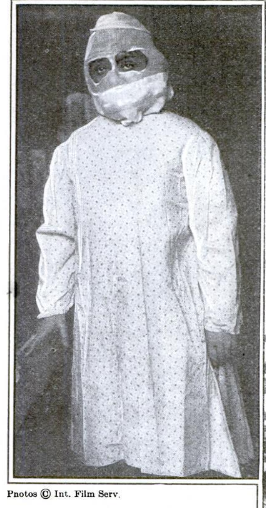
More in extended >>
Posted By: Paul - Tue Oct 05, 2021 -
Comments (3)
Category: Costumes and Masks, 1900s, 1910s
Ameta
I like the tornado effect towards the end.
Posted By: Paul - Mon Sep 13, 2021 -
Comments (0)
Category: Entertainment, Dance, Special Effects, 1900s

| Who We Are |
|---|
| Alex Boese Alex is the creator and curator of the Museum of Hoaxes. He's also the author of various weird, non-fiction, science-themed books such as Elephants on Acid and Psychedelic Apes. Paul Di Filippo Paul has been paid to put weird ideas into fictional form for over thirty years, in his career as a noted science fiction writer. He has recently begun blogging on many curious topics with three fellow writers at The Inferior 4+1. Contact Us |




